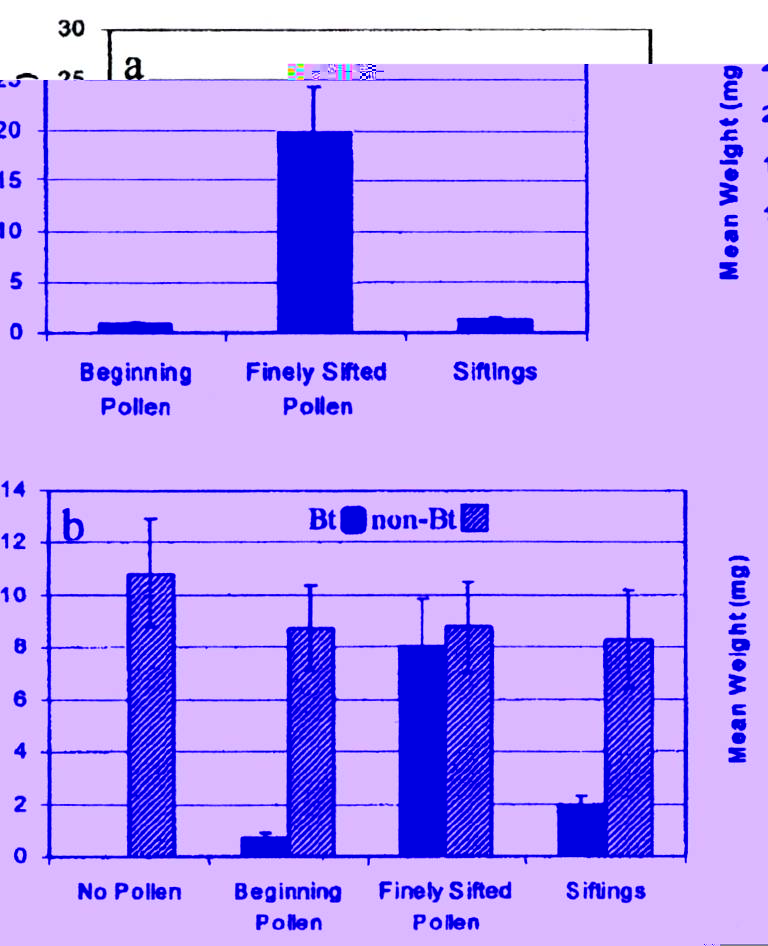

Figure Set 2: Bt Corn and Its Effect on Monarch Butterflies
FIGURE SET 2

Figure 2a. The survival of second to third-instar monarch larvae was tested. Three milkweed leaf treatments were conducted: leaves with no pollen (lavender), leaves treated with untransformed corn pollen (blue), and leaves dusted with pollen from Bt corn (black). The mean survival rate is based on the proportion of larvae surviving in five replicates of each treatment (from Losey, H. E., L. S. Rayor, and M. E. Carter. 1999. Transgenic pollen harms monarch larvae. Nature 399: 214, © 1999 Nature Publishing Group www.nature.com).
______________________________________________________________

Figure 2b. Survival curves for monarch larvae placed in and near Bt and non-Bt corn fields. Survival curve (a) is based on data from Iowa and survival curve (b) is based on data from New York (from Stanley-Horn, D. E. et al. 2001. Assessing the impact of Cry1Ab-expressing corn pollen on monarch butterfly larvae in field studies. Proceedings of the National Academy of Sciences 98: 11931-11936, © 2001 National Academy of Sciences, U.S.A.).
______________________________________________________________

Figure 2c. Mean weight of monarch larvae after exposure to milkweed leaves with no pollen and leaves with various levels of pollen from different plant hybrids. The different hybrids tested had varying Cry proteins. The hybrids and their Cry proteins are as follows: Bt11 and Mon810 events (Cry1Ab), Dbt418 event (Cry1Ac), Cbh351 event (Cry9C), and Tc1507 event (Cry1F) hybrids, and near isoline hybrids (from Hellmich, R. L. 2001. Monarch larvae sensitivity to Bacillus thuringiensis - purified proteins and pollen. Proceedings of the National Academy of Sciences early edition: 1-6, © 2001 National Academy of Sciences, U.S.A.).
______________________________________________________________

Figure 2d. These graphs depict the mean weight of monarch larvae after feeding on treated milkweed for 96 hours. Treatments included: (a) pollen from event Cbh351 (Cry9C) hybrid G8539Bt that was processed with 250-Ám sieve (beginning), pollen from same hybrid processed with 90-Ám sieve (finely sifted), and siftings remaining after the initial sample was finely sifted; and (b) no pollen, pollen from event Bt11 (Cry1Ab) hybrid N7070Bt, and pollen from hybrid N7070 (non-Bt that were processed in the same manner as pollen in a) (from Hellmich, R. L. 2001. Monarch larvae sensitivity to Bacillus thuringiensis - purified proteins and pollen. Proceedings of the National Academy of Sciences early edition: 1-6, © 2001 National Academy of Sciences, U.S.A.).